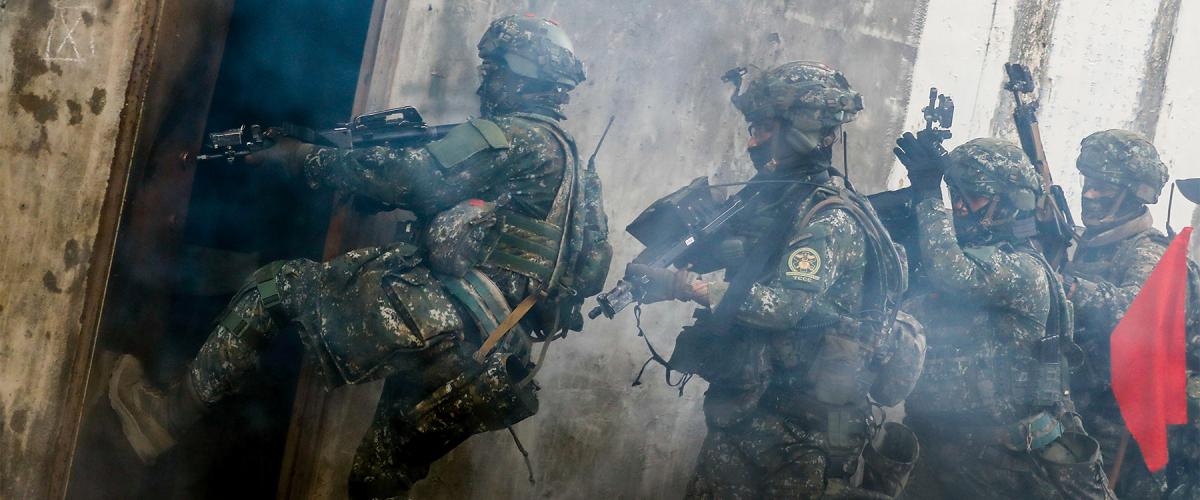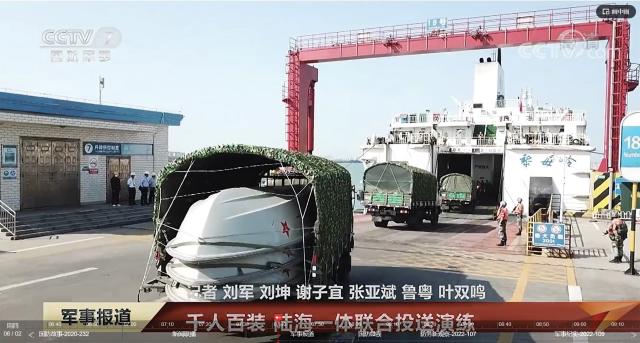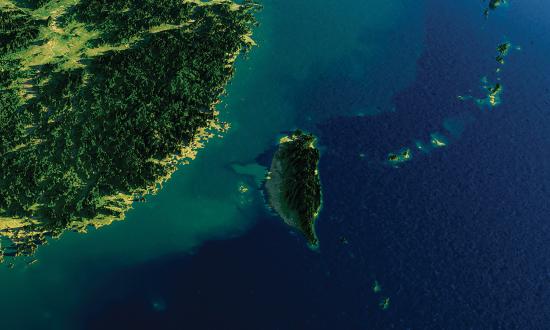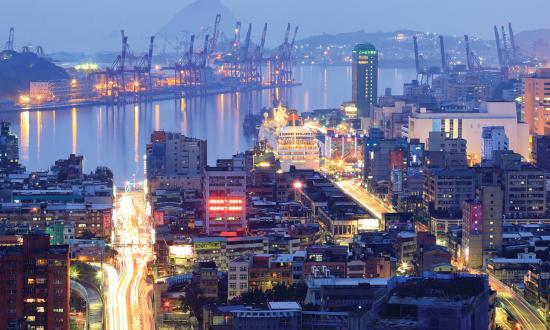The question of how the United States should defend Taiwan against a Chinese invasion is a pressing one. Taiwan’s position at the heart of the first island chain would make Chinese occupation a pivotal strategic moment. Not only would occupation of Taiwan allow the People’s Liberation Army Navy (PLAN) unfettered access to the Pacific, it also would allow China to turn Japan’s southern flank and dominate key sea lines of communication—potentially undercutting the U.S.-Japan alliance.1
U.S. planners contemplating Taiwan’s defense must contend with an evolving Chinese antiaccess/area-denial (A2/AD) system that, coupled with the broader modernization of the PLA, threatens to give China local conventional overmatch in any scenario involving Taiwan.2 A maturing system of long-range strike capabilities, backed by an evolving C4ISR complex, will allow the PLA to threaten surface vessels and aircraft operating in or near the first island chain. In addition, this development has occurred in tandem with an unprecedented expansion of the PLAN, which now exceeds the U.S. Navy in size.3
However, both Chinese and U.S. planning for a Taiwan scenario ignore a key element of littoral warfare: urbanization. The defense strategy for both the United States and Taiwan should be winning a long attritional battle for an urbanized littoral. Moreover, if U.S. plans for air and maritime operations in Taiwan were subordinated to the overarching goal of winning an urban war, they would be easier to operationalize—and make success more likely. Such a plan could dispel fears of abandonment and thus remove the primary impediment to coordinated planning with Taiwanese partners.
Fighting for the Urban Littoral
Much has been written about how the United States might face a Chinese fait accompli over Taiwan.4 The presumption is, if the PLA can transport enough troops across the Taiwan Strait and break out of its beachheads, China’s victory will be swift and all but ensured. The task for U.S. planners, then, becomes achieving theater entry before this can occur—a daunting challenge.
Recent experience, however, should raise questions about this assumption. Consider, for example, the Saudi-led coalition’s intervention in Yemen in 2018, which bogged down in port cities such as Hodeidah and Taiz even as rebel Houthi forces conducted a precision-strike campaign against both the coalition’s resupply vessels at sea and the homelands of its members.5 An urban struggle supported from within the contested cities and Houthi strongholds in the mountains turned the war in Yemen into a protracted and costly struggle for a coalition that had overmatch in every meaningful area of military power.
Taiwan’s geography is comparable to that of Yemen. Its west coast is comprised almost entirely of large urban nodes such as Taipei, Kaoshiung, Taichung, and Tainan, with 78 percent of the Taiwanese population living in cities.6 Beyond this are mountainous central highlands. The east coast is less urbanized but offers fewer landing sites. Those that do exist also are in relatively urbanized areas and have fewer roads and much more restrictive geography compared with the west coast, limiting the maneuver of an invasion force. Moreover, Chinese planners stress the need to seize and secure Taiwanese port facilities to sustain an invasion.7 Any Chinese amphibious invasion would thus inevitably transition to urban fighting.
If the crux of Taiwan’s defense were based not on denying the PLA a foothold on Formosa or defeating a landing force at its beachheads but on protracting and winning the subsequent urban fight, it would potentially offer an outgunned U.S. and Taiwanese force viable options to defeat the invasion. It also would imply changing the operational priorities and capabilities of maritime forces to frame their objectives around winning an urban battle.
Urban warfare is slow and resource intensive, as seen in the battles for Marawi, the Philippines; Hodeidah, Yemen; and Mosul, Iraq. The battle of Mosul took the best part of a year, while the inconclusive fighting around Hodeidah took six months.8
Considering these battles, a Chinese fait accompli is unlikely, even if the PLA disembarks substantial forces on Formosa. Moreover, urban warfare involves significant logistical strains. The intelligence, surveillance, and reconnaissance (ISR) advantages of the stronger side typically are attenuated by urban fighting, meaning that it needs substantially higher levels of munitions expenditure. In addition, occupying urban terrain is manpower intensive.9 Failure to occupy taken territory within a city is risky, as it exposes a force to envelopment by defenders who have not been cleared out—as Iraqi forces found in Mosul when they attempted to maneuver rapidly through the city.10
Greater requirements for logistical support, such as spare parts given the rates at which platforms were damaged by defenders, also strained urban attackers in sieges such as Grozny, Chechnya.11 As cities grow larger, these trends will be accentuated as fighting is likely to devolve into a series of micro sieges of specific parts of each city, as well as outlying satellite towns and suburbs.
The resource- and manpower-intensive nature of urban fighting determines the defender’s objectives in the urban littoral. Rather than targeting major surface combatants or preventing an amphibious crossing outright, the emphasis of defensive operations at sea shifts to targeting the vessels sustaining an invading force during the campaign. Converted ferries, tankers, and cargo vessels that sustain the PLA on shore become its center of gravity. For a defending force, this alters maritime priorities in several ways. First, the overarching objective of the maritime campaign will not be sea control or sea denial. Rather, the objective will be eroding the besieging forces’ resupply ability to the point at which resource expenditure ashore exceeds the rate of resupply. Following from this, tactical and operational objectives will shift toward targeting relatively soft targets close to the shore rather than holding an invading force at arm’s length.
Resupply vessels can be easily targeted for several reasons. First, by virtue of having to travel to known disembarkation points, they eliminate uncertainty regarding their destinations. Second, their limited resilience and often flammable cargo means they can be readily targeted with assets ill-suited for attacks on surface combatants. A loitering munition with a small warhead, for example, can do little to critically damage a military ship but could cripple a converted civilian vessel loaded with munitions or fuel.12 In Yemen, the Houthis successfully targeted civilian vessels with unmanned assets including unmanned aerial vehicles and suicide boats.13 Last, they lack organic defenses, and, unlike amphibious vessels conducting an initial invasion, they are unlikely to have persistent protection from surface combatants.
The crux of this approach would aim not at preclusive defense of Taiwan but at stranding and suffocating a Chinese force in Taiwan’s dense urban terrain. Though an unmanned asset with a limited payload is unlikely to secure a kill or mission kill against a military vessel, it can achieve devastating effects against civilian vessels laden with fuel and ammunition at favorable cost-exchange ratios. Also, although most data suggest large salvos of cruise missiles are needed to sink surface naval ships, cruise missiles can achieve significantly better exchange ratios against modified civilian craft.14 China’s ports across the Taiwan strait, which serve as both mustering points and logistical nodes for resupply vessels, also would become key targets for the United States and Taiwan.
U.S. Capabilities in Urban Littoral Defense
The argument has been made that a focus on asymmetrical defense has Taiwanese leaders concerned with the possibility of abandonment, as it suggests that U.S. involvement will not be forthcoming, and the island will need to defend itself.15 Such a risk can be offset if U.S. plans for defending the island are integrated with the objective of erosion to conceptually delink asymmetry from strategic decoupling. This would also provide U.S. forces with operational objectives that are more viable, and thus make the U.S. commitment more credible.
An approach centered on supporting an urban fight would shift the tasks of U.S. assets. The U.S. Navy and Air Force would, in this context, primarily focus on raiding China’s supply lines rather than targeting capital ships. Certain targets, such as ports, are too densely defended by China’s integrated air-defense system (IADS) to be attacked by cheaper assets. U.S. Navy fifth-generation airpower could provide a solution. The ability of aircraft such as the F-35 to penetrate an IADS is generally regarded as being quite high.
The primary issue for U.S. planners is sustaining sortie rates to establish air control. Air control is vital, given the distances at which aircraft carriers will need to operate because of missiles such as the DF-21D and bottlenecks caused by tanker refueling. An approach emphasizing raiding would ease these challenges, given that raids on port infrastructure and soft targets would require aircraft carriers to pulse power for distinct periods rather than generating a steady drumbeat of sorties—limiting their time in the threat envelope of strike assets. U.S. Air Force bombers also could focus on key Chinese ports opposite Taiwan.
The Navy’s submarine force, meanwhile, could contribute to a strike campaign and limit the number of vectors from which Taiwan can be approached. While fast-attack submarines (SSNs) are not optimal for operations in the strait, they could make access beyond the first island chain difficult for PLAN vessels—eliminating the option of an amphibious assault on Taiwan’s east coast—and cut of lines of supply in the South and East China Seas, limiting the PLA to using ports directly across the Taiwan Strait.
The role of the U.S. Marine Corps in such a conflict also would change from its expeditionary advanced base operations (EABO) concept of long-range strike from littoral positions against high-value naval platforms to one that would be more urban-centric.16 Iranian Revolutionary Guard Corps and Hezbollah advisors to the Houthis in Yemen helped refine their urban warfare tactics, techniques, and procedures and provided technical expertise and key materials for the Houthis to rapidly manufacture a range of strike assets.17 The early surreptitious insertion of a force of Marines into Taiwan—sufficient to provide advice, stiffen the backbone of an urban defense, and abet the production of the cheap strike assets needed to target Chinese supply lines—might make a greater difference than an EABO mission.
In this context, Marine littoral regiments should emphasize short-range strikes with cost-effective assets against soft targets rather than sea denial against surface combatants. Most critical, any force deployed on the ground should be prepared to live locally and rely at least in part on locally available stockpiles. Such a mission would require prior cooperation with Taiwan’s military to align concepts of operations, prepare for the reception of forces, and generate a base of prepositioned stocks and production facilities in remote or hidden positions. A concept of operations embedding the Marine Corps at the core of an urban defense might solve the challenge of abandonment concerns and thus enable this coordination.
Urban warfare and Potential Objections
An urban-centric approach would limit the task of U.S. forces to attrition against relatively soft targets. Unlike sea control and sea denial, this is achievable even should the balance of power shift further in China’s favor. Pulsing raids against key ports, attacks on sea lines of communication, and interdiction of resupply vessels all require more limited exposure to antiaccess capabilities.
Second, should a PLA ground force find itself in an inextricable position whereby it lands and is subsequently short on resupply and vulnerable to a counterattack, this force could become a strategic hostage. Its extrication on face-saving terms could be a condition for deescalation. While an invasion that failed outright might transition to a blockade, one that left a Chinese force disembarked with a dwindling rate of resupply would serve as a hedge against this challenge.18 A promise via a third party to abstain from counterattacks against a withdrawing force could be the basis for a ceasefire and withdrawal.
One might object that the Taiwan people’s will to fight might collapse under the exertions of urban warfare. The historical record regarding civilian resolve under extreme exertions suggests otherwise. Theories regarding the strategic utility of breaking civilian resolve have almost no historical purchase when a population faces existential stakes.19 From Syria and Yemen to Japan in World War II, populations have continued to support or at least acquiesce in their leaders’ war efforts even in the face of privation. To be sure, systems to stockpile and distribute critical resources to the population should be created as part of Taiwan’s total defense concept. However, even extreme deprivation is unlikely to break the resolve of a population fighting for national survival.
Though both U.S. and Taiwanese leaders have understandable reasons to avoid destructive urban warfighting, it is possible that using the geography of the island and its urban citadels is the best hope of success in the face of PLA overmatch.
1. Ian Easton, The China Invasion Threat: Taiwan’s Defense and American Strategy in East Asia (Washington, DC: Project 2049 Institute, 2017), 27–28.
2. On trends regarding the changing conventional balance in the Taiwan Strait, see Eric Heginbotham et al., The U.S.-China Military Scorecard: Forces, Geography and the Evolving Balance of Power 1996–2017 (Santa Monica, CA: RAND Corporation, 2015).
3. Mallory Shelbourne, “China Has the World’s Largest Navy With 355 Ships and Counting,” USNI News, 3 November 2021.
4. For a discussion of the fait accompli, see Kris Osborn, “The Plan for Combating a Chinese Invasion of Taiwan,” The National Interest, 5 June 2021.
5. Daniel Brown, “The Largest Battle of the Yemen War Is Raging on After a UAE Ship Is Struck by Missiles,” Business Insider, 6 June 2018.
6. Nicolas Douay, “From Urban Corridor to Megapolis: The Metropolization of Taiwan,” Fifth Conference of the European Association of Taiwan Studies, Prague, 18–20 April 2008.
7. Ian Easton, Hostile Harbours: Taiwan Ports and PLA Invasion Plans (Washington DC: Project 2049 Institute, 2021).
8. John Spencer and Jayson Geroux, “Case Study #2: Mosul,” Modern Warfare Institute Urban Warfare Project, 15 September 2021; and Patrick Wintour and Bethan McKernan, “Yemen: Cease Fire Agreed for Port City of Hodeidah,” The Guardian, 13 December 2018.
9. Anthony King, Urban Warfare in the 21st Century (Cambridge, MA: Polity Press, 2021).
10. Lecture by Professor Anthony King, RUSI Adversarial Studies Seminar, 5 November 2021.
11. John Spencer, “The Eight Rules of Urban Warfare and Why We Must Look to Change Them,” Modern Warfare Institute Urban Warfare Project, 1 December 2021.
12. On the subject of “bringing the detonator” to soft and flammable targets, see T. X. Hammes, “Expeditionary Operations in the Fourth Industrial Revolution,” Marine Corps University Journal 8, no. 1 (2017): 82–107.
13. Michael Knights and Fardim Nadimi, “Curbing Houthi Attacks on Civilian Ships in the Bab al-Mandab,” The Washington Institute for Near East Policy, 27 July 2018.
14. J. C. Schulte, An Analysis of the Historical Effectiveness of Cruise Missiles in Littoral Warfare (Monterrey, CA: Naval Postgraduate School, 1994), 18–30.
15. Raymond Kuo, “The Counterintuitive Sensibility of Taiwan’s New Defense Strategy,” War on the Rocks, 6 December 2021.
16. David Axe, “The U.S. Marine Corps Just Sank a Ship 100 Miles Away: It Needs to Do Better,” Forbes, 24 August 2021.
17. Trevor Johnston, Matthew Lane, Abigail Casey, Heather J. Williams, Ashley L. Rhoades, James Sladden, Nathan Vest, Jordan R. Reimer, and Ryan Haberman, Could the Houthis Be the Next Hezbollah? Iranian Proxy Development in Yemen and the Future of the Houthi Movement (Santa Monica, CA: RAND Corporation, 2020), 66–71; and Presentation by Dr. Uzi Rubin at Royal United Services Institute Space and Missile Defence Conference 2020, delivered at RUSI, London, 27 February 2020.
18. Lonnie Henley, written testimony for the U.S.-China Economic and Security Review Commission, Hearing on Deterring PRC Aggression toward Taiwan, 18 February 2021, 9.
19. For a discussion of this dynamic in the context of strategic bombing, see Robert Pape, Bombing to Win: Airpower and Coercion in War (Ithaca, NY: Cornell University Press, 1994).









